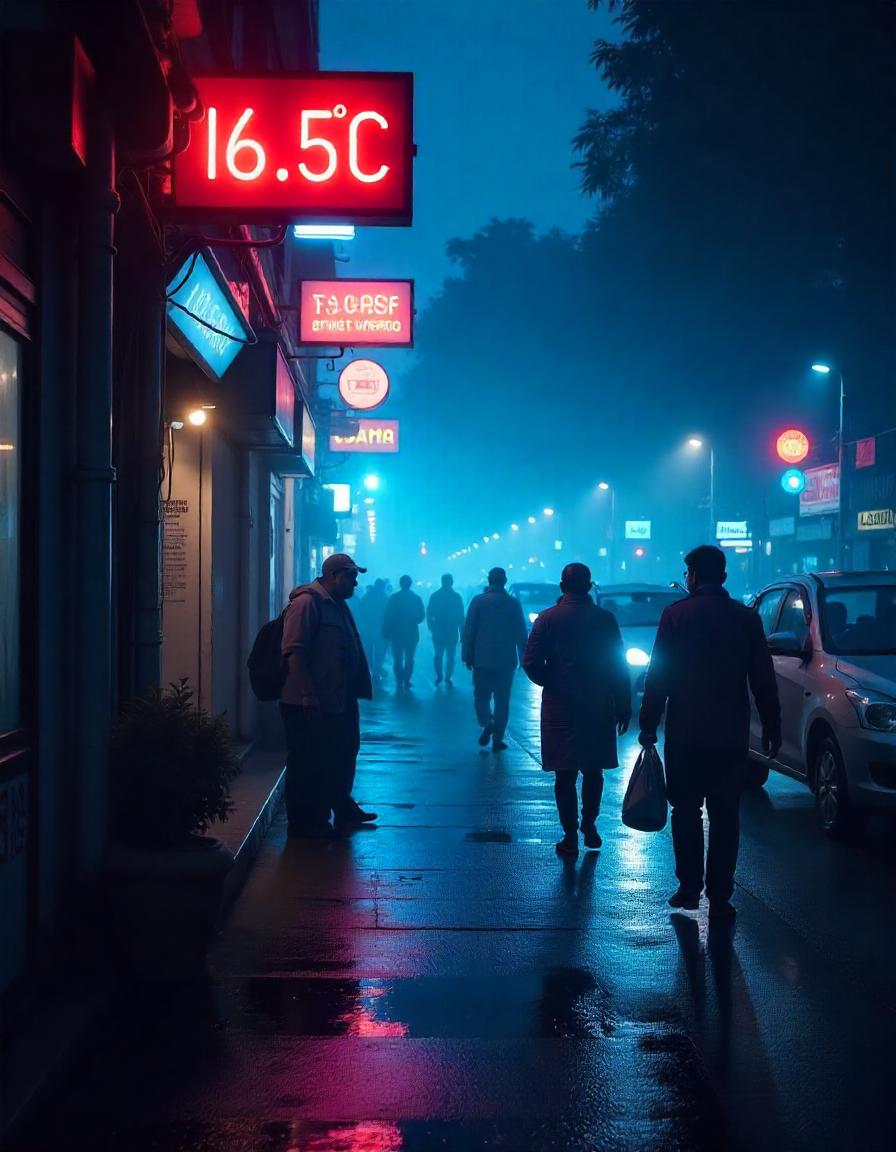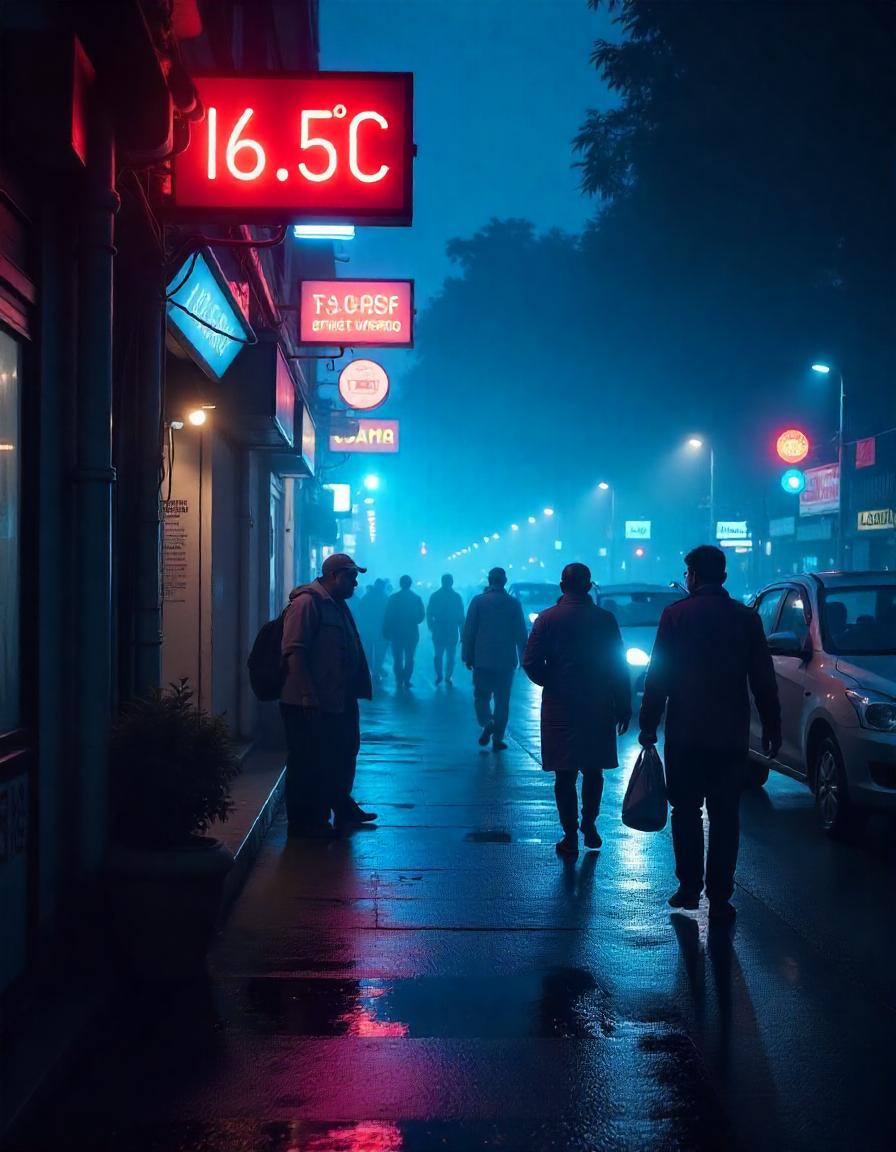Mumbai, with its tropical temperature and humid conditions, felt an unprecedented cold when temperatures dipped to 16.5°C on November 29, 2024, the lowest November day in eight years. Mumbaikars, who live more in searing heat and moderate winters, were surprised by the abrupt drop in mercury. This rare occurrence has spurred debates on shifting weather patterns and given the city’s generally balmy temperature a welcome variation.
An unusual weather event
The lowest November temperature since 2016—when the city had a similarly chilly day—is the 16.5°C temperature noted by the India Meteorological Department (IMD). November temperatures in Mumbai usually range from 20 to 25°C; overnight lows seldom ever go below this range.
The abrupt drop is ascribed by meteorologists to a cold wave sweeping northern and central India, which has delivered colder winds to Maharashtra. Mumbai’s uncommon winter-like day came from the lack of cloud cover and the entry of dry, northerly winds allowing the temperature to plummet.
Mumbaikar’s Response
For a city not used to cold, the temperature decrease set off a mixture of astonishment and enthusiasm. More often in northern India than in Mumbai, residents all throughout the city wrapped themselves in sweaters, coats, and shawls. Posts and memes honoring the cool weather were all over social media, and many people playfully likened the city to Shimla or Manali.
“Having this kind of weather in Mumbai feels so rejuvenating,” remarked Andheri resident Priya Sharma. Usually, we are whining about the temperature and humidity. This is such a relief.
Chai and pakoras sold on street sides attracted a lot of business as people savored the chance to embrace the winter-like mood.
Affect on Everyday Life
For Mumbaikars, the colder-than-average weather presented benefits as well as drawbacks.
- Good morningues
Many of the inhabitants used the cold temperature to do jogs or early walks. People enjoying the fresh air were crowded parks and promenades including Marine Drive and Bandra Bandstand.
- Higher Energy Usage
Mumbai homes rarely have warm water geysers, so the abrupt drop in temperature resulted in increased use of heaters. But the milder temperatures also meant less reliance on air conditioning, which might help to minimize household and office electricity use.
- Physical Issues
Although many people praised the reduced temperature, doctors cautioned. Particularly in senior people and children, the abrupt temperature change could cause respiratory problems. Doctors advised dressing warmly, drinking plenty of water, and avoiding early morning and late evening cold breeze exposure.
Analogues to Historical lows
Although 16.5°C is noteworthy for November, Mumbai has never seen a lower temperature ever recorded. Recorded in January 1962, the all-time low of the city was 10.6°C. But November’s temperatures hardly drop below 18°C, hence this recent decline is a notable occurrence in Mumbai’s meteorological history.
Insights from Meteorology
The IMD claims that Mumbai’s colder temperature is mostly caused by the cold wave currently influencing northern India. Strong western disturbance is causing states including Rajasistan, Haryana, and Uttar Pradesh to have much lower temperatures. Affecting Maharashtra and surrounding regions, this disturbance has driven cold air southward.
Mumbai’s unusual geography—surrounded by the Arabian Sea—usually helps to temper excessive cold. But when northern dry winds overwhelm the maritime impact, the city may have sporadic temperature declines as experienced this week.
Global Context: Modifying Climate Patterns
Mumbai’s odd cold fits more general debates about climate change and how it affects local weather patterns. Climate change is causing experts to observe increasing frequency of unusual weather phenomena including unseasonal rain and abrupt temperature declines.
“While it’s difficult to link one specific event to climate change, the rising frequency of such anomalies is consistent with what we expect in a warming world,” said climate scientist Dr. Anjali Deshmukh. “Extreme weather events can result from the interaction between local weather systems and global warming, even in locations like Mumbai known for their consistent tropical climate.”
Mumbai’s future holds what?
Over the next three days, Mumbai’s temperatures should progressively return to normal, according to the IMD; lows should rise back to about 20°C. Nonetheless, over the next week the city might still see chilly mornings and nights, therefore giving its citizens a longer taste of winter.
Advice for Residents Through Cooler Weather
Wear light clothes, particularly in early morning and evening, to prevent getting a chill.
Those who suffer with respiratory problems should be careful and wear masks to guard against chilly winds.
Maintaining general health depends on keeping hydration even in chilly conditions.
Enjoy the outdoors: This is a perfect time for jogging, cycling, or just a stroll with lower humidity and cooler air.

Eventually
Mumbai’s usually warm and humid climate was refreshingly changed by the rare decrease in temperature to 16.5°C, which tasted winter to its citizens. Although these kinds of events are rare, they show how dynamically Indian weather patterns are. Mumbaikars are savoring a little break before the city returns to its typical tropical warmth. Right now, they are maximizing the cold weather.
If you are interested for more: Mumbai with its tropical temperature and humid condition of 16.5°C Thanks to a great strike by Boris Singh, passed Blasters 1-0

